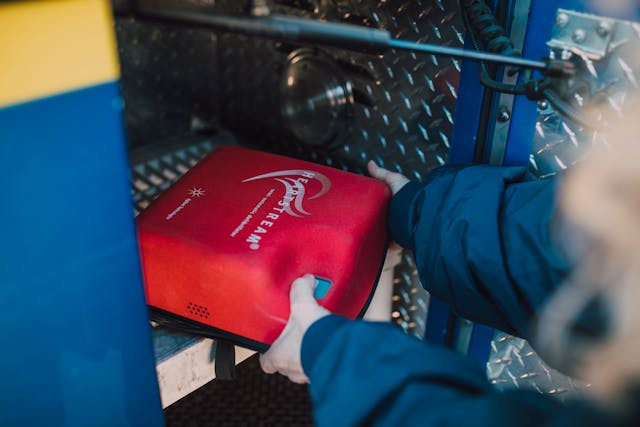5 Technologies That Are Revolutionizing Fire Watch Services
Technology is transforming fire watch services, improving efficiency, response time, and overall security. Traditional fire watch methods relied heavily on manual surveillance, physical patrols, and human observation. However, advancements in artificial intelligence (AI), the Internet of Things (IoT), and smart surveillance systems are enhancing fire prevention and response capabilities. These innovations not only help detect potential hazards but also streamline reporting, reduce operational costs, and ensure compliance with fire safety regulations. This article explores five cutting-edge technologies that are reshaping the fire watch industry and how businesses can benefit from them.
Read More : Vezgieclaptezims: Emerging Trend In Investment And Strategy
The Role of Technology in Fire Watch Services
Fire watch services play a crucial role in fire prevention, especially in environments where fire protection systems are malfunctioning, under maintenance, or absent. Modern technology enhances fire watch services by:
- Increasing accuracy in fire detection and risk assessment.
- Reducing human error in fire monitoring.
- Enhancing communication between fire watch personnel and emergency responders.
- Enabling real-time data collection and reporting for regulatory compliance.
- Improving efficiency in large-scale and high-risk environments, such as construction sites, industrial facilities, and remote locations.
With these technological advancements, fire watch services have become more proactive, responsive, and reliable. Companies that leverage these innovations can significantly reduce fire-related risks and improve overall safety.
Technology #1: AI-Powered Fire Detection Systems
Artificial intelligence (AI) is playing a significant role in fire detection and prevention. AI-powered systems can:
- Analyze visual data from surveillance cameras to detect fire hazards before they escalate.
- Recognize patterns that indicate potential fire risks, such as smoke, unusual heat signatures, or flame flickers.
- Send automated alerts to fire watch personnel and emergency responders in real time.
- Integrate with other fire safety systems to initiate automatic emergency response measures.
Benefits of AI-Powered Fire Detection:
- Faster detection: AI identifies fire risks instantly, reducing response time.
- Minimizes false alarms: AI algorithms can differentiate between real threats and harmless anomalies.
- 24/7 monitoring: AI systems provide continuous surveillance, eliminating gaps in manual monitoring.
- Cost-effective: Reducing the need for manual monitoring lowers operational expenses for businesses.
Industries such as manufacturing, warehousing, and hospitality are increasingly adopting AI-driven fire detection systems to enhance fire safety and minimize operational risks.
Read More : Chesters Menu Taste of Excellence Delicious Offerings
Technology #2: Real-Time Surveillance and Smart Cameras
Smart surveillance cameras equipped with advanced sensors and analytics are transforming fire watch services. These cameras can:
- Detect smoke, flames, and temperature fluctuations using thermal imaging and infrared technology.
- Transmit live video feeds to fire watch personnel and emergency response teams.
- Integrate with AI algorithms for enhanced fire risk assessment.
- Offer remote access for off-site monitoring and decision-making.
Advantages of Smart Surveillance:
- Improved accuracy: Smart cameras reduce the chances of missing early fire warning signs.
- Remote monitoring: Fire watch teams can monitor high-risk areas from centralized control rooms.
- Integration with alarms: These cameras can trigger automated fire alarms and suppression systems.
- Enhanced security: In addition to fire detection, smart cameras help prevent unauthorized access and other security breaches.
The ability to remotely monitor fire-prone areas makes smart surveillance systems a valuable asset for commercial properties, data centers, and industrial sites.
Technology #3: IoT-Based Fire Safety Monitoring
The Internet of Things (IoT) is revolutionizing fire watch services by enabling interconnected fire detection systems. IoT-based fire monitoring involves:
- Deploying networked sensors that measure heat, gas leaks, and air quality.
- Using wireless connectivity to send real-time alerts to fire watch personnel and business owners.
- Storing fire risk data in cloud systems for analysis and preventive measures.
- Automating responses such as activating fire suppression systems and shutting down critical equipment.
Benefits of IoT in Fire Watch Services:
- Early warning system: IoT sensors can detect fire hazards before they become visible.
- Automated response: IoT systems can activate fire suppression mechanisms when needed.
- Data-driven insights: Historical fire data helps in improving fire prevention strategies.
- Scalability: IoT solutions can be deployed across multiple locations for seamless monitoring.
Smart buildings, hospitals, and high-rise apartments are leveraging IoT-based fire monitoring to ensure safety and regulatory compliance.
Technology #4: Drones for Large-Scale Fire Watch Services
Drones are becoming an essential tool in fire watch services, especially in large-scale or high-risk environments such as construction sites, industrial plants, and forests. Fire watch drones are equipped with:
- Thermal cameras that detect heat signatures from a distance.
- AI-powered software to analyze fire-prone areas.
- GPS tracking for precise location mapping.
- Live streaming capabilities for real-time decision-making.
How Drones Improve Fire Watch Services:
- Rapid assessment: Drones can cover vast areas quickly, providing a comprehensive fire risk assessment.
- Enhanced safety: Fire watch personnel can monitor dangerous locations without exposing themselves to hazards.
- Cost-effective: Reducing the need for extensive human patrols lowers operational costs.
- Versatility: Drones can be deployed in remote locations where traditional fire watch methods are impractical.
Fire departments, oil and gas facilities, and large event venues are increasingly utilizing drones for proactive fire prevention and emergency response.
Technology #5: Cloud-Based Fire Watch Reporting and Documentation
Cloud computing is transforming the way fire watch services handle reporting and compliance. Fire watch companies now use cloud-based platforms for:
- Storing and sharing real-time fire watch logs.
- Automating fire incident reports for regulatory compliance.
- Enhancing communication between fire watch personnel and emergency response teams.
- Generating predictive analytics to identify fire risk trends.
Advantages of Cloud-Based Fire Watch Systems:
- Instant access to data: Fire watch reports can be accessed from anywhere, ensuring transparency and efficiency.
- Improved record-keeping: Automated documentation helps in regulatory compliance and audit preparation.
- Seamless collaboration: Multiple teams can access fire safety data simultaneously.
- Scalability: Cloud solutions can be expanded as business needs grow.
Many enterprises are shifting to cloud-based fire watch reporting to streamline operations, improve compliance, and enhance overall safety.
Conclusion
Technology is significantly improving fire watch services by making fire detection faster, monitoring more accurate, and reporting more efficient. AI-powered detection systems, smart cameras, IoT-based monitoring, drones, and cloud-based reporting are transforming how fire risks are managed.
As technology continues to advance, fire watch services will become more proactive and reliable, ensuring better fire prevention and overall safety for businesses and communities. Companies that adopt these technologies will not only enhance their fire protection strategies but also reduce operational costs and ensure regulatory compliance in an increasingly digital world.








